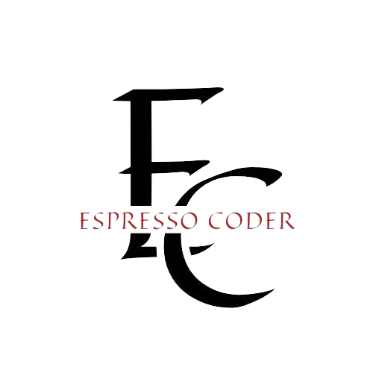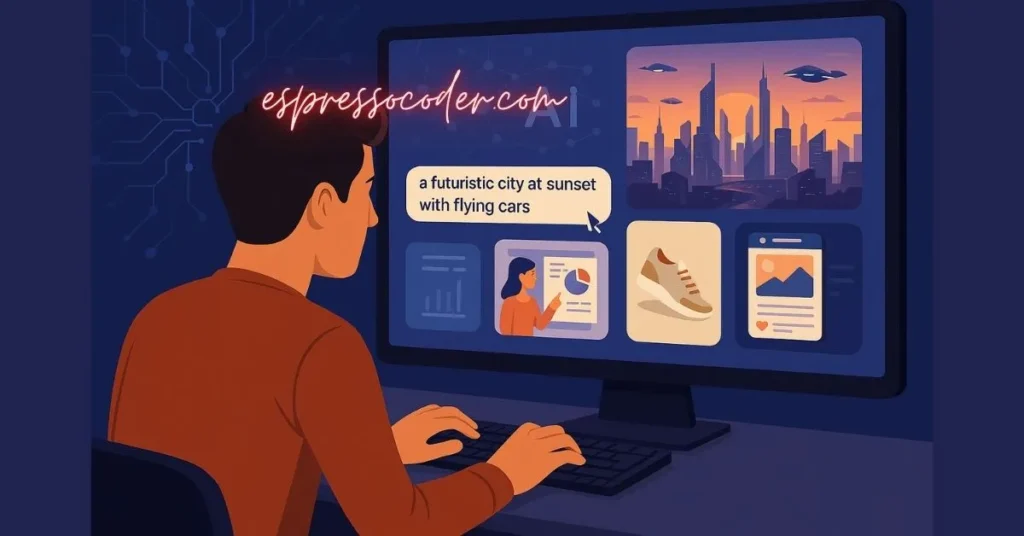There has never been a bigger need for visually striking content in the fast-paced digital world of today. Whether you’re a marketer, content developer, teacher, or just someone who wants to make their ideas come to life, images are essential for drawing in viewers and getting your point across. But what if you could make beautiful pictures without ever using a camera or a paintbrush?
This is not only feasible but also becoming commonplace due to the development of artificial intelligence. We’re seeing a radical change in the creation, consumption, and comprehension of visuals with the rise of AI-generated images.
Contents
AI-Generated Images: What Are They?
AI generated images are visuals produced solely by machine learning models that decipher text inputs from users. Simply put, you input your desired image—for example, “a futuristic city at sunset with flying cars”—and the AI creates an image that embodies that idea. Machines can now comprehend context, style, color, and composition thanks to sophisticated neural networks that have been trained on enormous datasets.
AI picture generators streamline the creative process, in contrast to conventional design tools that call for technical expertise and artistic talent. These days, even someone without any design experience can produce eye-catching, high-quality images in a matter of seconds.
The Magic’s Scientific Foundation
But how precisely can AI convert words into images?
Generative Adversarial Networks (GANs), a subset of machine learning, and more modern models like diffusion models are at the heart of this invention. This is a condensed explanation of the procedure:
- Text Interpretation: After reading your query, the AI uses natural language processing (NLP) to decipher the words in order to determine their context and intent.
- Visual Matching: To find the most pertinent styles, objects, and settings, the system compares your input to millions of visual samples in its training data.
- Image Generation: Using those associations, the neural network creates an image with a composition that corresponds to your question.
- Refinement: To increase resolution, color balance, and detail accuracy, some sophisticated systems perform several iterations.
These techniques are intended to provide meaningful, context-aware pictures that closely match
human expectations rather than merely producing random images.
The Significance of AI-Generated Pictures
This technology has broad ramifications and is used in many different industries:
- Marketing and Advertising: Produce campaign ideas, product prototypes, or distinctive visual advertisements for specialized markets.
- Publishing and Blogging: Enhance written content with images that precisely reflect the tone and meaning of the piece.
- Education and E-Learning: Create learning resource illustrations without the need for an illustrator.
- Social media: Create captivating posts, narrative backdrops, and profile images quickly and accurately.
- Film and Gaming: AI-generated concept art can be used in gaming and film to envision settings, characters, or storyboards.
By enabling people and small businesses to compete with larger corporations that have had access to expensive creative resources, AI-generated images are democratizing creativity.
Use Case: Producing Content for Small Companies
Suppose you own a neighborhood candle company and require Instagram and website marketing images. You can enter a prompt such as “a cozy room with a glowing scented candle on a wooden table” in place of paying a photographer or buying stock photographs. You get a number of distinctive, high-quality photos that perfectly convey the essence of your brand in a matter of seconds.
In addition to saving you time and money, this also grants you total creative control, enabling you to try out various themes, colors, and settings without any technological restrictions.
The Confluence of AI-Generated Pictures and Video Production
While AI-generated images is becoming more popular, video creation is another technology that is developing quickly at the same time.AI is increasingly included into video making apps to assist in producing visual narratives with little work. These tools may create a polished film for promotion, education, or personal use by combining AI-generated images with text overlays, music, and transitions.
This collaboration creates amazing opportunities:
- In explainer videos, use AI-generated graphics as slides.
- Make motion graphics by animating still images.
- Create narrated videos for YouTube or eLearning by combining with AI voiceovers.
To put it briefly, you don’t need a production crew or a studio setup to transform a basic text concept into a finished video.
Moral Aspects to Take into Account
Even while AI-generated images have many advantages, there are significant moral dilemmas to consider:
- Ownership: Does the AI platform or the user own the image?
- Authenticity: In journalistic or documentary settings, how can you reveal that an image is artificial intelligence (AI) generated?
- Bias and Representation: AI outputs may mirror or reinforce biases existing in training data.
As this technology advances, transparency, inclusion, and responsibility must be given top priority by both users and creators.
Prospects for the Future
We may anticipate even more sophisticated, adaptable, and interactive picture generating tools as AI models advance. Systems of the future could:
- Answer voice cues.
- Permit picture alteration in real time through dialogue input.
- Easily integrate with additional creative tools to create full-stack content.
Increased productivity and even easier access to creativity across industries are the results of this.
Concluding Remarks
There has never been a more thrilling or accessible path from imagination to image. AI-generated graphics are an effective approach to make your ideas come to life, whether you’re a teacher, content provider, business, or just someone with a creative spark.
The possibilities are endless when combined with the features of video-making programs, ranging from completely animated video presentations to blog illustrations and social media graphics.
You don’t have to be a designer to design or a filmmaker to make movies in this new age of digital innovation. AI can assist you in visualizing your ideas; all you need is a concept.

